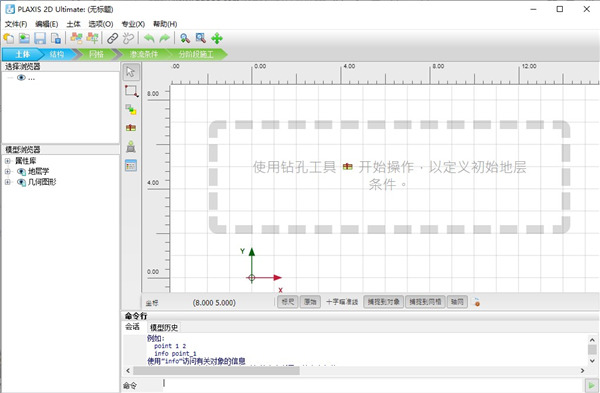
Technology Preview: SACS - PLAXIS Suction Bucket Analysis tool for interoperability with SACSĪdded SACS - PLAXIS Suction Bucket Analysis tool for interoperability with SACS to model the interaction between the soil and SACS designed suction buckets This new numerical settings helps to improve the behaviour of slow converging calculations.


This is now solved.Īdded subspace accelerator as an additional numerical control parameter in the phase settings. Creating cross-sections for plates could lead to a crash. Inaccuracy in embedded beam results are now also included in first step determination, leading to faster convergence in cases with high plasticity Fixed an issue in amplification spectra determination to use the proper Fourier data to get correct amplification spectra curves
#Python plaxis 2d update
Void ratio value update based on volume strain is now improved PLAXIS 3D crashed when adding more than 255 material datasets. In some cases, loads display in Output lead to very high memory usage. Fixed an issue when using the commands runner for calculating projects with long command lists In rare cases, the set command could lead to a crash in Staged Construction mode Embedded beam Layer dependent skin-friction now uses correct strength parameters when using UBC Sand to compute shaft resistance. making the echo command for volumes more consistent after several file loading Many other issues have been fixed, including: Solved: Geogrids may trigger a Run-time kernel error Solved: Tunnel beams/girders generated in the wrong direction
#Python plaxis 2d license
Solved: PLAXIS CONNECT Edition V21.00.00 calculation does not start due to a license issue The following Known issues have been resolved: Python distribution folders are now updated and default location changed to C:\ProgramData\Bentley\Geotechnical\PLAXIS Python Distribution V1 Update 1\ Updated Python environments to remove security vulnerabilities on some of the included packages. This will ease pinpointing possible causes of non-convergence.

This makes importing Tunnel cross section CAD files much easier to handle and ensures proper geometric connectivity.Īdded a tool for accessing calculation convergence log files during and after calculations to gain more insight into the convergence process. New functionality includes selecting, snapping and intersecting tunnel segments and subsections during import. Improved workflow for importing tunnel cross-sections and tunnel trajectory into the Tunnel Designer. The model can be used to model water bodies as continuum elements with an appropriate constitutive model. The model is typically used to simulate static liquefaction of loose silts, the mechanism understood to be the cause of several recent tailings dam failures.Īdded a Fluid model as User Defined Soil Model.
#Python plaxis 2d full



 0 kommentar(er)
0 kommentar(er)
